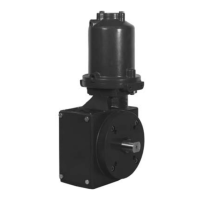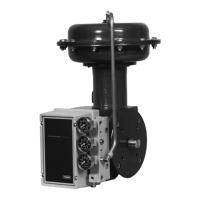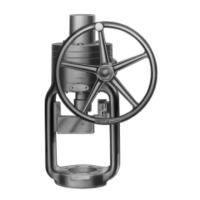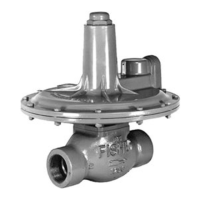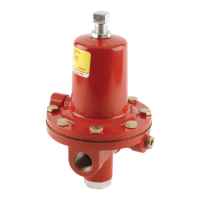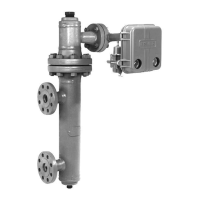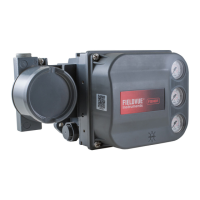Types 1098-EGR and 1098H-EGR
20
procedure steps 1 and 4, and pull the stem
(key 14) out of the diaphragm casing (key 4).
Grease the replacement stem O-ring (key 30,
Figures 21 and 22) with a good grade of lubricant
and install it on the stem (key 14).
5. Install the stem (key 14) into the diaphragm
casing (key 4) and perform Body Area
Maintenance procedure steps 6 through 8
as necessary.
6. Install the lever assembly (key 16) into the stem
(key 14) and secure the lever assembly with the
machine screws (key 17).
7. Hold the pusher post (key 8) and place diaphragm
assembly parts on the pusher post in the following
order: diaphragm (key 10), diaphragm head
(key 7), lower spring seat (key 50), and washer
(key 36), and secure with diaphragm cap screw
(key 38) using 7 to 9 foot-pounds (9 to 12 N•m)
of torque.
8. Install the pusher post (key 8) and attached parts
onto the lever (key 16).
9. Install the control spring (key 6) and spring case
(key 3) on the diaphragm casing (key 4) so that the
vent assembly (key 26) is correctly oriented, and
secure them with the cap screws (key 24) and hex
nuts (key 23) to nger tightness only.
10. Turn the adjusting screw (key 35) clockwise
until there is enough control spring (key 6) force
to provide proper slack to the diaphragm
(key 10). Using a crisscross pattern, nish
tightening the cap screws (key 24) and hex nuts to
5 to 6 foot-pounds (6,8 to 8,1 N•m) of torque. Finish
turning the adjusting screw to the desired outlet
pressure setting.
11. Install the closing cap (key 22).
Type 95H Supply Pressure Regulator
This section includes instructions for disassembly and
assembly of replacement parts. All key numbers refer
to Figure 24.
1. Unscrew the valve plug guide (key 5) from the
body (key 1). The valve plug spring (key 10) and
the valve plug (key 4) will normally come out of
the body along with the valve plug guide.
2. Inspect the seating surface of the valve plug,
being sure that the composition surface (or
polished steel surface) of the valve plug is not
damaged. Replace if damaged.
3. Inspect the seating edge of the orice (key 3).
If damaged, unscrew the orice from the body
and replace it with a new part. If no further
maintenance is required, reassemble the
regulator in the reverse of the above steps. When
installing the valve plug guide (key 5) coat the
threads and sealing surface with sealant to ensure
an adequate metal-to-metal seal.
4. To inspect the diaphragm (key 12) or other
internal parts, loosen the locknut (key 17) and
turn the adjusting screw (key 15) to remove all
spring compression.
5. Remove the diaphragm case cap screws
(key 16) and lift off the spring case (key 2).
Remove the upper spring seat (key 9) and
regulator spring (key 11). Remove the lower
spring seat (key 8).
6. Remove the diaphragm (key 12) and examine for
damage. Replace if damaged.
7. With diaphragm removed, check to be sure the
pressure registration hole is completely open and
free of all obstructions.
8. Reassemble in reverse order of the previous
steps. Lubricate the upper spring seat (key 9)
and the exposed threads of the adjusting screw
(key 15). Before tightening cap screws (key 16)
be sure to install the adjusting screw, if completely
removed, and turn it down to obtain diaphragm
slack. This allows proper positioning of the
diaphragm to permit full travel of the valve plug
(key 4). Complete reassembly procedures and
temporarily install a gauge in place of the pipe plug
(key 52). Turn the adjusting screw to produce the
desired outlet pressure values shown in Table 2.
Tighten the locknut to maintain the desired setting.
Types 1098 and 1098H Actuator and Pilot
Mounting Parts
Perform this procedure if changing the actuator
or inspecting, cleaning, or replacing actuator
and/or pilot mounting parts. Actuator part key
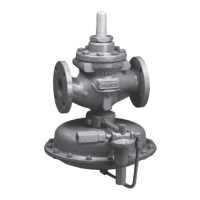
